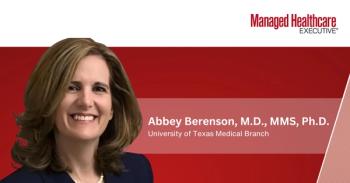
Four critical tech tools plans and providers should offer consumers
Having technology tools for member engagement is no longer a novelty. Members now expect and prefer digital communications, and it is critical for MCOs to stay on top of technology trends to compete in the market.
Having technology tools for member engagement is no longer a novelty. Members now expect and prefer digital communications, and it is critical for MCOs to stay on top of technology trends to compete in the market. Nearly 84% of members prefer digital interactions with their health plan, according to a 2015 survey of 1,600 health plan members by
Members also prefer to use mobile tools, such as a mobile app to access digital features, compare plans, schedule appointments, locate pharmacies, and refill prescriptions, according to the survey.
Almost 40% of survey respondents say that health plans have room to improve their technology offerings including digital self-service tools, and web and mobile features.
“Clearly there is room for improvement, particularly when it comes to handling claims digitally, the study authors wrote. “About one-third of members are only somewhat to not at all satisfied with their plans’ communications, claims handling operations, and customer support. Members consistently said availability of digital features in these areas was important to them, such as apps for digitally submitting claims and estimating costs for procedures.”
Survey respondents also said they want more collaboration between payers and providers, and said they are open to receiving health and wellness advice from their insurers. “In short, they’re worried more about the clock accurately telling time than about all its bells and whistles,” according to the study authors.
Here are four critical tech tools plans and providers should offer consumers.
A lot of the information in patient portals is not very contextual. For patients with chronic conditions or complex health situations, it can be hard to figure out what it all means, says Brian Eastwood, lead engagement analyst for Chilmark Research, a health IT research and advisory firm. He adds that patient portals can lead to more questions than answers, such as if a patient is viewing a series of test results with no provider to walk them though what the results mean.
Eastwood says that in the next few years, patients will be able to click a link within portals to access telehealth, specialists, ancillary services and individualized discharge information, instead of having to call in the office, or look on other websites. “There will be better capabilities to help patients find specialists and ancillary services,” Eastwood says. “A lot of health plans have wellness and weight management programs integrated in their services, but members don’t know about them. Links to those services and educational resources should be in the patient portal.”
Patient portals can also offer more robust and individualized discharge instructions to patients, featuring guidelines that integrate information from a patient’s health record, Eastwood says.
“If a person is diagnosed with diabetes, recommendations will include things like, ‘eat more vegetables.’ But for someone with colitis or irritable bowel syndrome, that general instruction doesn’t work for them,” Eastwood says. “If a patient portal can communicate with the patient record, then it can give a smarter recommendation.”
There is also an opportunity for patient portals to help patients be more proactive with their wellness goals. Eastwood says, instead of patients on care plans receiving paperwork and phone calls from their doctors, patient portals will be able to integrate with apps and programs for chronic condition management.
“Health plans are further along than provider organizations when it comes to technology, but consumers don’t think of the payer as the place that helps manage their conditions,” Eastwood says. “These robust technology tools give health plans leverage when it comes to partnering with provider organizations. If there’s already a product available that has been demonstrated to lower costs, it can be ‘white labeled’ with a hospital system.”
2. Robust social media
Most plans and healthcare systems have a social media presence, and many understand the importance of reaching their members on popular platforms. But experts say that creating a robust social media strategy is a way to give their brands a personality.
“Fifteen to 20 years ago, a consumer would never see an insurance company with a personality. That’s not true now,” says Clay Cutchins, associate creative director at Franklin Street Marketing, which specializes in healthcare marketing and branding. “Now you see Geico, Progressive, and others who use personality as a point of separation in the market.”
Offering tips and information about weight loss, maternity care, and prevention is a great way to create a narrative on social media platforms, says Rachel McGuinn, a writer at Franklin Street Marketing.
“Facebook is more of an ‘educate me’ arena, not the place for a hard sell,” McGuinn says, adding that more health plans are using Instagram to show more personality. She says Twitter is a good platform to show alignment with other health-based organizations and agencies, and build relationships with media and public relations stakeholders. “Good visuals, data, and quick, helpful information helps to build that personality,” she says.
McGuinn says she doesn’t push for health organizations to be on every platform. “I’m not seeing a place for health plans on Snapchat, just based on the age of the audience there,” she says. “It’s important not to spread your resources too thin. Concentrate more effort where the audience is.”
Efforts that continue to improve transparency and build relationships with members are key, as consumers ultimately stick with brands that they trust to tell them the truth. “A lot of health organizations can work on being more responsive,” McGuinn says. “If I can see what others are saying, and see that the organization has made a quick response, that goes a long way.”
3. Broader telehealth services
MCOs are finding more value in reimbursing and offering telehealth services, also called remote care, to members. Research shows that telehealth services can reduce administrative costs, improve access, improve patient and member satisfaction, and increase engagement.
For those MCOs that already offer telehealth visits to members for primary care services, there’s an opportunity to go broader. For example, the Medical University of South Carolina (MUSC) offers telehealth services for stroke, critically ill, maternity, and behavioral health patients.
Shawn Valenta, RRT, MHA, director of Telehealth for MUSC, says that as healthcare continues to shift toward value and outcomes, telehealth will be an obvious part of those payment models.
“With an increased adoption of smartphones and wearable technology, it will become easier to access and monitor patients in need,” Valenta says. “However, the real change will come from harnessing the data and reporting it in an efficient and useful way. We have an opportunity to leverage telehealth to transform how we deliver care. We want to be able to offer care that is more predictive and proactive.”
Valenta says that MUSC conducts about 3,000 telestroke consultations annually, and patients have 27/7 access to expert care in case of an emergency. “With an average response time around five minutes, our team and statewide partners have collaborated to demonstrate some of the best door-to-needle times in the country,” Valenta says.
Telehealth services also allow MUSC to reach patients who have significant challenges with access to care in South Carolina, Valenta says. MUSC is a part of the Palmetto State Provider Network, a private, broadband network that aims to connect healthcare providers.
“We view telehealth as a tool that can help providers deliver more care with less resources. Telehealth has helped bridge communication gaps between providers, and insert efficiencies within our care delivery system,” Valenta says.
4. Engaging text messaging
Using text messages to engage members is a strategy that helps them stay engaged using technology that they are already accustomed to in other areas of their life.
AmeriHealth New Jersey uses text messaging to engage members who have joined the health plan through healthcare exchanges. The organization’s Text2Renew service sends text messages to consumers before open enrollment periods, and gives them the option to renew their plan for next year. The health plan has been using the text message program since 2016.
“We continue to see more and more members choosing to actively renew their plan through Text2Renew,” says Jill Roman, spokesperson for AmeriHealth New Jersey. “The expectation is that the popularity of this tool will grow as technology becomes more synonymous with managing healthcare.”
Roman adds that the health plan uses text messaging throughout the year to keep members engaged.
“Other texts sent throughout the year remind members to take advantage of wellness rewards, prescription mail orders, telemedicine, and our insider discount program.”
Donna Marbury is a writer in Columbus, Ohio.
Newsletter
Get the latest industry news, event updates, and more from Managed healthcare Executive.



















































